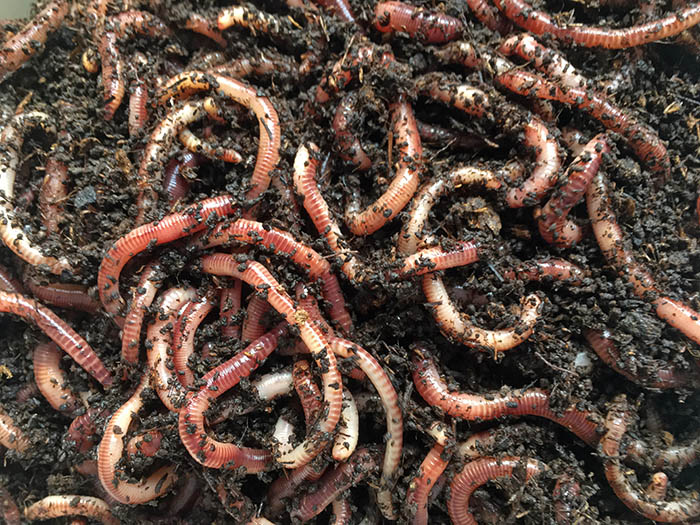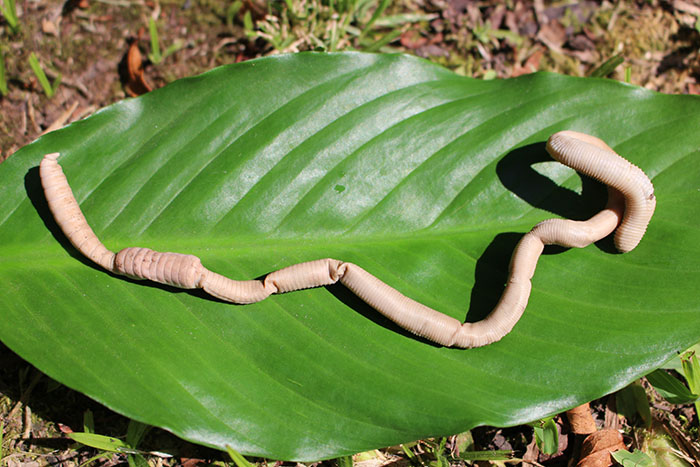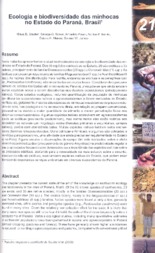Research in five continents shows earthworm diversity and distribution in the planet
Research in five continents shows earthworm diversity and distribution in the planet
Photo: iStock_Stockcam

Scientists from 57 countries participated in the biggest global mapping of earthworms
The occurrence and the distribution of earthworm communities around the globe mostly depends on climate, especially rainfall. This was one of the main conclusions of the largest study ever conducted on these animals responsible for structuring the soil and for most of the recycling of the organic matter it contains.
Recently published in Science magazine, the work gathered and analyzed an enormous database produced in 6,928 locations in 57 countries, by 134 research institutions, including four Brazilian ones: Maranhão State University (Uema), Positivo University (UP), University of São Paulo Luiz de Queiroz College of Agriculture (Esalq-USP) and Embrapa.The goal was to map the spatial distribution patterns of earthworm communities and identify the factors that mold the richness and number of species.
“It was a surprise to observe that the type of soil and its characteristics do not have as much influence on earthworm distribution as rainfall”, reports the Embrapa Forestry researcher George Gardner Brown, coauthor of the research. He reveals that there was an expectation that humidity would be one of the main influencers of the occurrence of these animals, as they breathe through their the skin and need moist soils to be active. “However, rainfall proved to be more important than factors like temperature and plant cover, besides soil characteristics”, the scientist shares his wonder.
More subject to climate change
One of the consequences of the discovery is that earthworms can be strongly affected by climate change in the planet. Brown explains that these animals reduce their physiological activities during drought periods, when they enter in diapause or become inactive. To resume a more active biological routine, they are "awakened” when the rains return. “This means that any climate alteration that interferes in this process can harm them. A longer dry spell can exhaust earthworm populations throughout the years. Isolated rains in the middle of dry seasons can confuse them and make them come back to activity before it is time and leave them exposed to water scarcity later”, exemplifies the researcher.
With an eye on this problem, Helen Philips, a researcher at the German Centre for Integrative Biodiversity Research (iDiv), in Leipzig, Germany, intends to further the research with regard to the effects of climate change on earthworms. Philips is the first author of the study. It is already known, for instance, that these animals are sensitive not only to the amount, but especially to the regularity of rains.
The loss or reduction in earthworm populations would entail the disappearance of many of the valuable environmental services they provide, according to Brown, which would also affect agriculture. They stimulate microbial activity and work as engineers, forming the soil structure that allows the aeration and penetration of water and roots. “It is no wonder that farmers and gardeners consider their presence an important indicator of soil quality, which is mostly confirmed in our studies", he states.
The latitude enigma
The average number of species found in each assessment varied between one and four, but curiously there was an increase in local richness of species as latitudes grew. The richness of species was greater in middle latitudes than in low latitudes in the tropical region. This is the opposite of what occurs with surface animal and plant organisms, which have greater diversity in tropical regions. The scientists have not discovered the reason for this peculiarity yet, but they speculate that it can be related to climate factors such as the evapotranspiration potential, the soil's organic matter content, the glaciation that occurred in the quaternary period, and human activities that promoted the dispersion of earthworms, especially exotic species, in temperate regions.
Nevertheless, Brown draws attention to the fact of that the species diversity is bigger only in the places of collection and not in the regions as a whole. In France, for example, one can commonly find a larger number of species of earthworms in any given site of collection than in a Brazilian one. However, there is a bigger chance that the same species are also found in other places in Europe. In the tropics, in turn, despite the lower number of species cohabiting the same area, the species diversity is higher, as they are less repeatedly found between one place and another, which is known as beta diversity. Moreover, in the tropics, the number of endemic species (found in a single place, or in reduced areas) tends to be bigger.
How many earthworms?
The study measured earthworm communities through three parameters: species richness (number of different species found on site); species abundance (amount of individuals); and biomass (weight, in grams, of all the earthworms found). Brown details that the last parameter is important because the size of the animals is directly linked to changes in soil structure. A numerous community of small individuals can have less impact on this aspect than a smaller group formed by bigger animals, for instance.
For each of the parameters, the influence of six variables was analyzed: plant cover, altitude, soil type, rainfall, temperature and water retention. It was this comparison that revealed the importance of rains for the species. While temperature and water retention were determinant to ensure the abundance of earthworms and plant cover was strongly associated with biomass, rainfall proved to be a strong influencer of the three parameters at the same time.
The global study originated from the compilation and analysis of 180 papers around the world, 16 of which yet to be published. “This is a valuable research contribution, as today we know very little about soil organisms and their distribution in the world”, posits the Embrapa researcher.
Brown recalls that the volume of information produced is not homogeneous in every region of the planet. “As in different research areas, there is an abundance of data for temperate regions and gaps for tropical ones”, he states, emphasizing that one of the reasons for this disparity is the easier access to financial and human resources, infrastructure and materials present in countries with temperate climates in the planet.
An earthworm called Embrapa
In addition to the research conducted in Embrapa's experimental fields, the corporation is home to important biodiversity under their surface. Brazilian and foreign researchers have already described 13 new species of earthworms within Embrapa's areas (see below) and another 20 await formal description. The most recent ones are Fimoscolex nivae, Glossoscolex maschio and Glossoscolex embrapaensis. The three were found in areas at Embrapa Forestry and were named after participants in the discovery. F. nivae is a homage to Cíntia Niva, a researcher from Embrapa Cerrados; G. maschio alludes to Wilson and Wagner Maschio, father and son who own an area neighboring Embrapa Forestry in which the species was found; and G. embrapaensis honors the research corporation itself.
“It is important that Brazil learns that Embrapa also consists in important biological heritage for the country, since its research units, and experimental fields and stations have an enormous wealth of animals, including insects and other invertebrates such as earthworms, for instance”, asserts the researcher George Brown.
Check the earthworm species discovered within the Embrapa Units:
1. Righiodrilus amazonius (Zicsi & Csuzdi, 1999) and
2. Pontoscolex franzi Zicsi & Csuzdi, 1999, both collected at Embrapa Eastern Amazon's Capitão Poço stattion;
3. Righiodrilus moju Bartz, Santos & James, 2017, collected at Embrapa Eastern Amazon's Moju experimental field;
4. Cirodrilus righii Zicsi, Römbke & Garcia, 2001, collected at Embrapa Eastern Amazon's experimental area in Manaus,
5. Righiodrilus ortonae (Righi, 1988),
6. Pontoscolex cuasi Righi, 1988,
7. Eukerria guamais Righi, 1971,
8. Urobenus gitus (Righi, 1971),
9. Atatina puba Righi, 1971 and
10. Liodrilus ipu (Righi, 1975), the latter six species of which were collected at Embrapa Eastern Amazon's experimental area in Belém;
11. Fimoscolex nivae Feijoo & Brown, 2018,
12. Glossoscolex maschio Feijoo & Brown, 2018 and
13. Glossoscolex embrapaensis Feijoo & Brown, 2018, collected at Embrapa Forestry in Colombo, Paraná.
Photo: George Brown
Translation: Mariana Medeiros
Embrapa Forestry
Press inquiries
florestas.imprensa@embrapa.br
Phone number: +55 41 3675-5638
Fábio Reynol (MTb 30.269/SP)
Secretariat of Research and Development
Further information on the topic
Citizen Attention Service (SAC)
www.embrapa.br/contact-us/sac/



